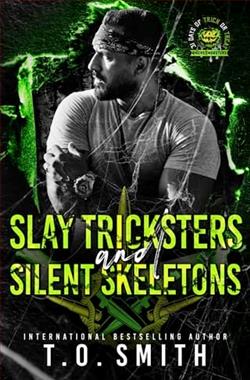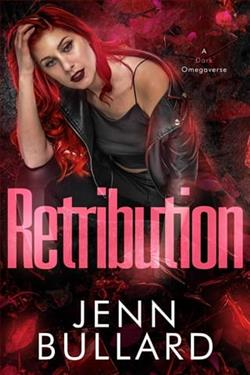Page 34 of O is for Outlaw (Kinsey Millhone 15)
It rained during the night, one of those rare tropical storms that sometimes blow in from Hawaii without warning. I woke at 6:36 A.M. to the sound of heavy raindrops drumming on my skylight. The air gusting through the open window smelled of ocean brine and gardenias. May in California tends to be cool and dry. During the summer months following, vegetation languishes without moisture, a process of dehydration that renders the chaparral as fragile as ancient parchment. The rolling hills turn gold while the roadsides glow hazy yellow with the clouds of wild mustard growing along the berm. By August, the temperatures climb into the 80s and the relative humidity drops. Winds tear down the mountains and squeeze through canyons. Between the sundowners, Santa Anas, and the desiccated landscape, the stage is set for the arsonist's match. Rains might offer temporary relief, delaying the inevitable by a week or two. The irony is that ram does little more than encourage growth, which in turn provides nature with additional combustible fuel.
By the time I woke again at 5:59, the storm had passed. I pulled on my sweats and went out for my run, returning to the apartment only long enough to toss a canvas duffel in the car and head over to the gym. I lifted weights for an hour, working my way through my usual routine. Though I'd only been back at the process for two months, I was seeing results, shoulders and biceps taking form again.
I was home at nine. I showered, ate breakfast, tossed some items in my fanny pack, grabbed my shoulder bag, left a note on Henry's door, and hit the road for L.A. Traffic was fast-moving, southbound cars barreling down the 101. At this time of day, the road was heavily populated with commercial vehicles: pickups and panel trucks, semis and moving vans, empty school buses, and trailers hauling new cars to the showrooms in Westlake and Thousand Oaks. As I crested the hill and eased down into the San Fernando Valley, I could see the gauzy veil of the smog that had already begun to accumulate. The San Gabriel Mountains, often obscured from view, were at least visible today. Every time I passed this way, new construction was under way. What looked like entire villages would appear on the crest of a hill, or a neighborhood of identical condominiums would emerge from behind a stand of trees. Billboards announced the availability of new communities previously unheard of.
Overhead, two bright yellow aircraft circled, one following the other in an aerial surveillance focused on those of us down below. The berm was littered with trash, and at one point I passed one of those perplexing curls of tire tread that defy explanation. Once I reached Sherman Oaks, I turned right on the San Diego Freeway. The foliage along the berm was whipped by the perpetual wind of passing vehicles. Several towering office buildings obstructed the view, like sightseers on a parade route with no consideration for others. I took the off-ramp at Sunset and drove east until the UCLA campus began to appear on my right. I turned right onto Hilgard, right again on Le Conte, and right onto Tiverton, where I paid for a parking voucher. There were no parking spots available in the aboveground lot. I began my descent into the underground levels, circling down and down until I finally found a spot on C-1. I locked my car and took the elevator up. The extensive grass and concrete plaza served both the Jules Stein Eye Clinic and the UCLA Hospital and Medical Center. I crossed to the main entrance and entered the lobby, with its polished granite walls and two-tone gray carpet with a smoky pink stripe along the edge. The reception area on the right was filled with people awaiting word of friends and family members currently undergoing surgery. Two teenage girls in shorts and Tshirts were playing cards on the floor. There were babies in infant seats and a toddler in a stroller, flushed and sweating in sleep. Others were reading newspapers or chatting quietly while a steady foot traffic of visitors crossed and recrossed the lounge. The lobby chairs and adjoining planters were boxy gray modules. On the left, the gift shop was faced in a curious hue somewhere between mauve and orchid. A large glass case contained sample floral arrangements in case you arrived to see someone without a posy in hand.
Dead ahead, above the information desk, the word INFORMATION was writen large. I waited my turn and then asked a Mrs. Lewis, the patient information volunteer, for Mickey Magruder's room. She was probably in her seventies, her eyelids crepey as a turtle's. Age had cut knife pleats in the fragile skin on her cheeks, and her lips were pulled together in a pucker, like a drawstring purse. She did a quick check of her files and began to shake her head with regret. "I don't show anybody by that name. When was he admitted, dear?"
"On the fourteenth. I guess he could be registered as Michael. That's how the name reads on his birth certificate."
She made a note of the name and consulted another source. Her knuckles were knotted with arthritis, but her cursive was delicate. "Well, I don't know what to tell you. Is it possible he's been discharged?"







